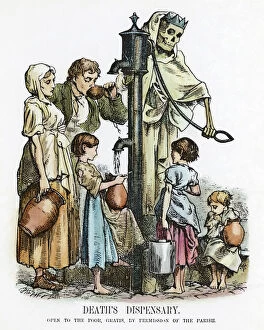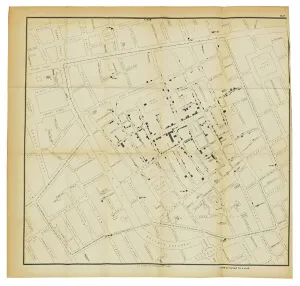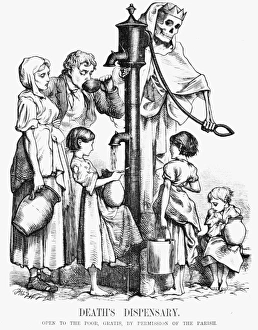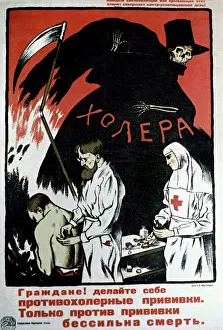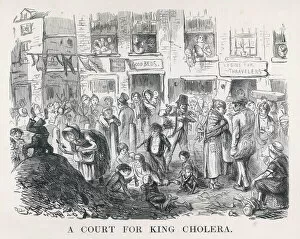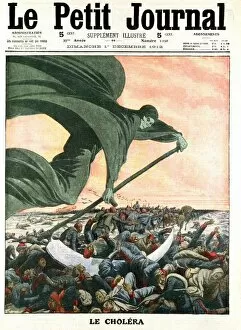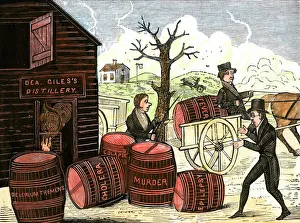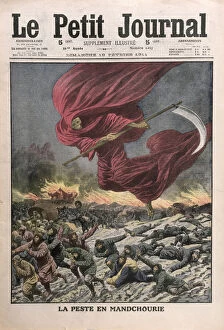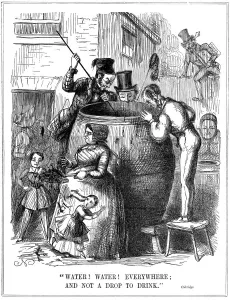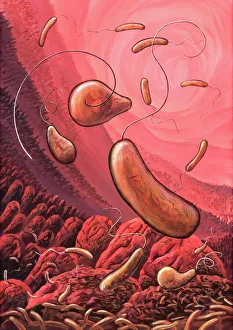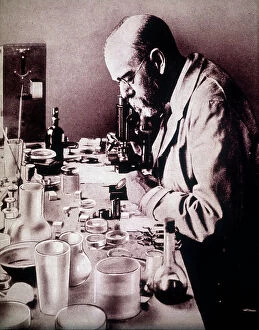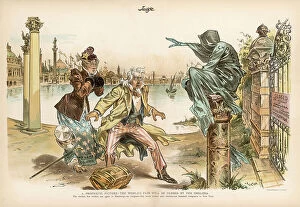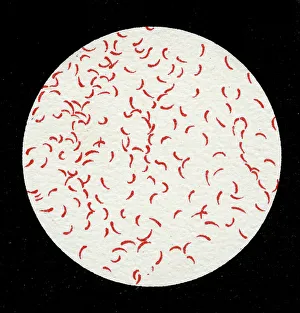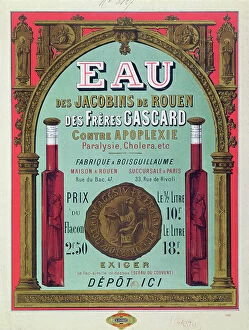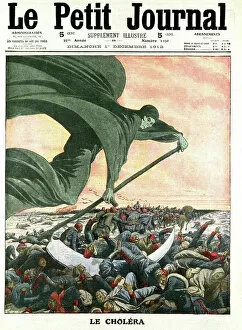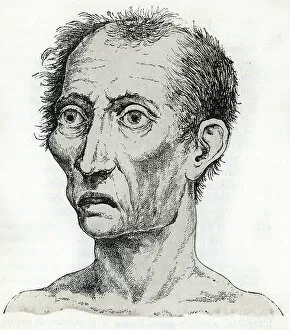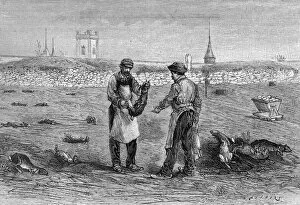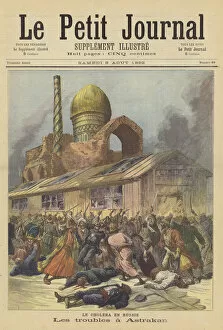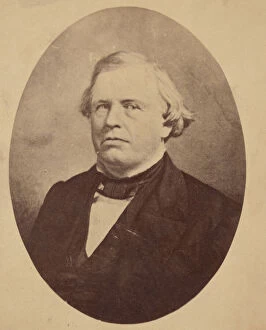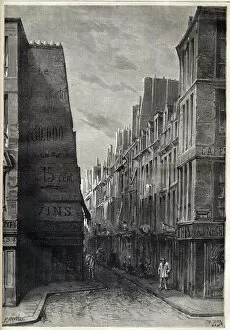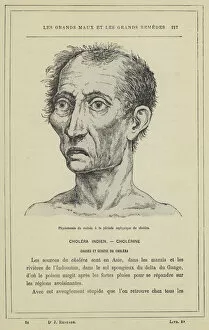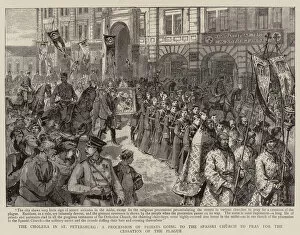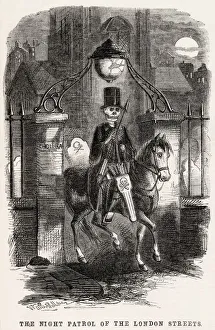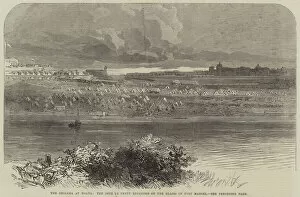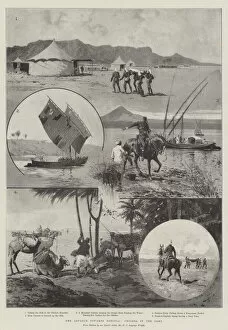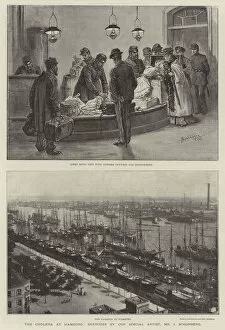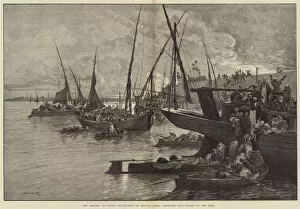Cholera Collection
"Unmasking the Silent Killer: Cholera's Deadly Grip on Society" In the 19th century, a sinister force plagued communities worldwide, leaving devastation in its wake
All Professionally Made to Order for Quick Shipping
"Unmasking the Silent Killer: Cholera's Deadly Grip on Society" In the 19th century, a sinister force plagued communities worldwide, leaving devastation in its wake. This force was cholera, an infectious disease that struck fear into the hearts of many. As depicted in an 1866 cartoon titled "Deaths Dispensary, " water pollution emerged as a significant source of this deadly illness. The pollution cartoon from the same year further emphasized how contaminated water acted as a breeding ground for cholera. It served as a chilling reminder of the urgent need to address this issue and protect public health. To combat cholera's relentless onslaught, societies established unique measures such as creating courts specifically dedicated to dealing with King Cholera himself. These courts aimed to hold accountable those responsible for spreading this dreaded disease and sought justice for its victims. Fast forward to 1967 when Soviet Union released a vaccination poster against cholera. This powerful image highlighted their commitment to eradicating this menace through preventive measures like immunization campaigns. However, not all sources were external; some internal factors contributed too. A temperance cartoon from the 1830s by Deacon Giles Distillery shed light on alcohol consumption exacerbating vulnerability to diseases like cholera. It urged individuals to reconsider their habits and prioritize their well-being. Cholera's impact extended beyond borders, reaching even distant lands like Manchuria - illustrated vividly on the cover of Le Petit Journal in an allegory of plague artwork. The haunting imagery reminded readers that no one was safe from its grip unless collective action was taken. Water scarcity compounded these challenges during outbreaks, echoing Samuel Taylor Coleridge's famous line: "Water. Water. Everywhere; and not a Drop to Drink. " In 1849, access to clean drinking water remained elusive for many affected communities struggling against cholera's wrath. Understanding how it spread became crucial in combating cholera effectively.

